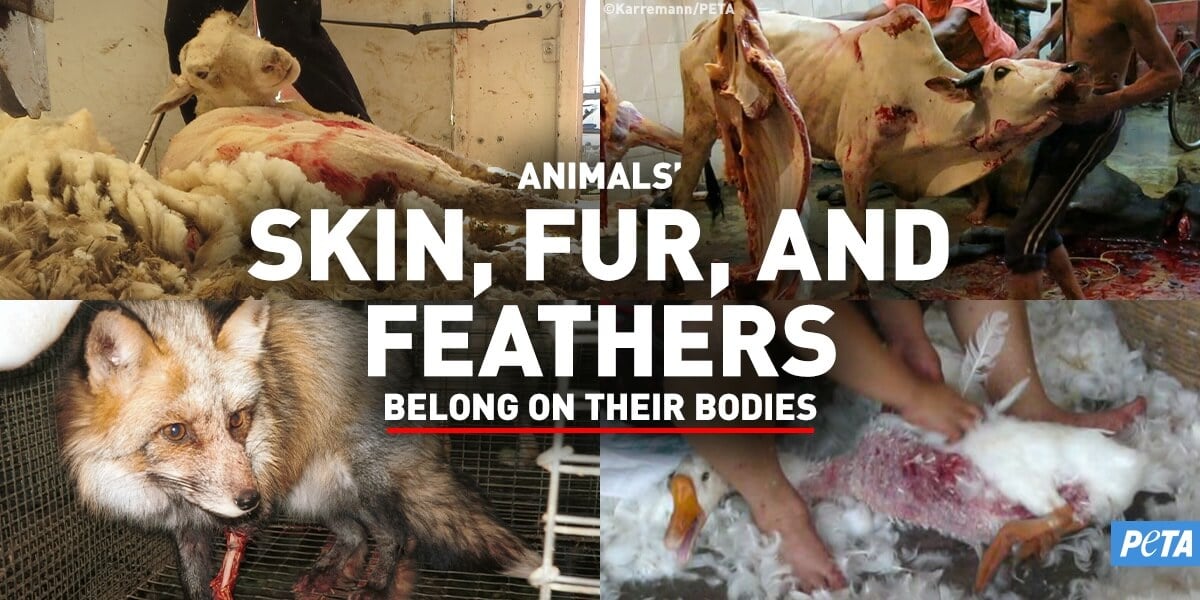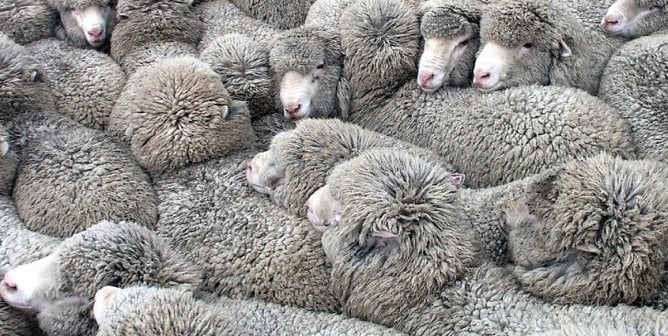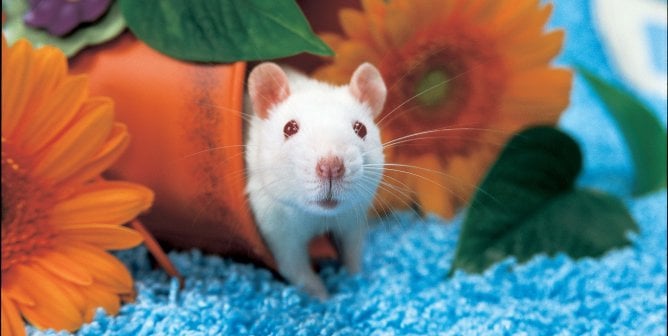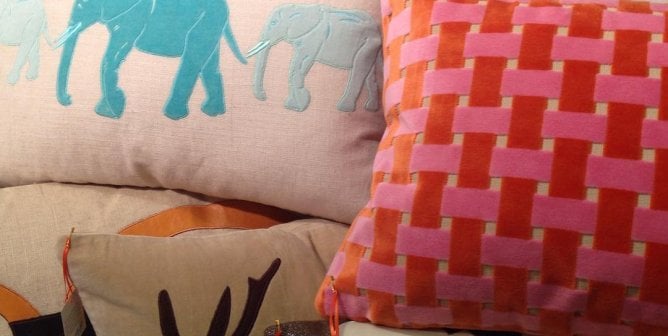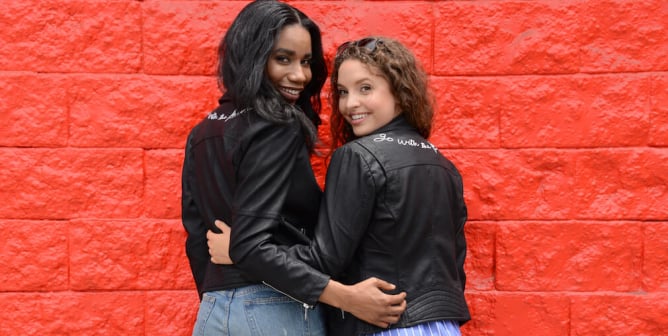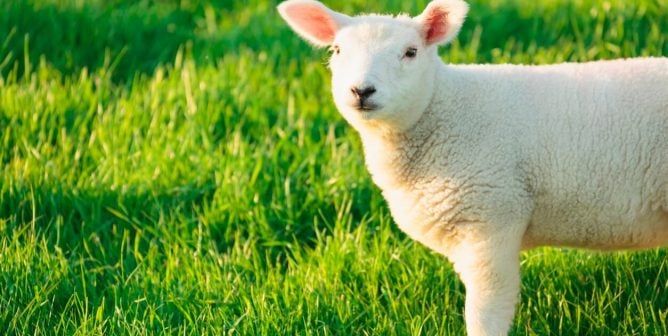Animals Used for Clothing
Every year, billions of animals suffer and die for clothing and accessories. Skin is torn from them to make leather, birds are held down while handfuls of feathers are ripped out of their sensitive skin, and small animals are caged for life before being killed for their fur. Sheep are often beaten and mutilated by workers stealing their wool and their skin for shearling. Goats are similarly abused for cashmere and mohair. All this is done in the name of fashion. No matter the type of material or where it comes from, if the process involves an animal, it involves horrific cruelty.
The practice of wearing animal-derived materials is on its way to becoming a thing of the past, thanks to PETA. Our dedicated activists and supporters have exposed systemic cruelty in the skins (leather), wool, down, cashmere, mohair, and fur trades. Our investigations of these industries have repeatedly exposed widespread and relentless abuse of animals. Our advertisements and demonstrations against these bloody industries are famous for shocking the public, turning heads, and initiating action. We do hands-on work with companies behind the scenes to persuade the largest names in fashion to ditch clothing made from animals. PETA has also led radical actions against top-tier brands, persuading them to stop using animal-derived materials.
This is an exciting time—more so than ever before, people are against wearing animals. From mohair hats to shearling jackets to leather shoes, shoppers are ditching cruel and environmentally toxic items in favor of compassionate and sustainable vegan items.
How Animals Used for Clothing Are Killed
The vast majority of the billions of animals who are killed for their skin, wool, feathers, or fur endure all the horrors of factory farming. Sensitive living beings are forced to live in cramped, filthy conditions, and every bit of freedom and autonomy is taken away from them. Animals suffer at the hands of workers, who may roughly handle, kick, and beat them. After a lifetime of torment, they’re violently slaughtered via the cheapest means possible, including bludgeoning, anal electrocution, and gassing. Some are even dismembered and skinned alive. Trapped animals used for their fur can suffer for days from blood loss, shock, dehydration, frostbite, and gangrene or be attacked by predators before trappers return to kill them.
Fur and leather items are often deliberately mislabeled. In countries where animal welfare laws are virtually non-existent, some producers have been known to kill dogs and cats for fur and leather. So if you wear animals, there’s no easy way of knowing whose skin you’re in. But you can be sure that no matter who they were, they didn’t want to die to become clothing or accessories.
Wearing Vegan Clothing
In addition to causing the suffering and deaths of billions of animals each year, the production of animal-derived materials—including wool, fur, and leather—contributes to climate change, land devastation, pollution, and water contamination.
@officialpeta Don’t be fooled by an industry that profits from cruelty—wool hurts sheep AND the planet.
♬ Sad Somber Piano and Cello – Moko_Music
Advancements in textiles make Earth-friendly vegan materials nearly indistinguishable from and far superior to their animal-derived counterparts. There’s a reason why many outdoor clothing companies have ditched animal fur. The vegan materials available today are much lighter, and they’re far more durable and practical.
Many of us are familiar with common vegan fabrics such as cotton and polyester. But in the 21st century, business in vegan fashion is booming. Clothes and accessories made from hemp, bamboo, and other animal-free materials are now commonplace. They can also be made from innovative and sustainable materials such as cork, mushrooms, pineapple leaves, apple peels, other fruit waste, or recycled plastics. With so many different materials to choose from, there’s no excuse for animals to die violently and painfully for fashion.
Help Animals Used for Clothing
When shopping for clothes, always choose something vegan—not someone. Pledge not to wear leather, fur, or wool. Post on the social media accounts of major brands urging them to stop selling materials made of animal parts. Stay up to date with the latest PETA campaigns for more ways to help.
With the help of our members and supporters, PETA and international PETA entities work globally to expose and end the use of animals in the fashion industry. Our actions include the following:
- Conducting groundbreaking undercover investigations to inform the public
- Working with celebrities and other activists on a wide variety of campaigns
- Holding colorful, eye-catching campaigns such as “fur crawls,” naked demos, and Fur-Free Friday protests outside stores
- Persuading legislative bodies to ban the farming and sale of fur and exotic skins
- Encouraging fashion designers, companies, and shoppers to use only vegan fabrics
- Buying stock in companies for the sole purpose of pressuring them to change
- Facilitating connections between major brands and vegan innovators
- Awarding innovative companies for creating new vegan materials and designs
- Partnering with compassionate designers, brands, and retailers on runway shows, exclusive vegan products, and many other exciting initiatives
- Hosting ethics and sustainability panels at fashion universities to help educate the next generation of designers about the vegan fashion revolution
- Promoting vegan options that are available from popular stores and brands
- Exposing the cruelty behind all animal-derived materials, including mohair, down, and shearling
This multifaceted approach secures lifesaving victories for animals targeted by the deadly fashion industry, and soon, using animals for clothing and accessories will be a thing of the past.

